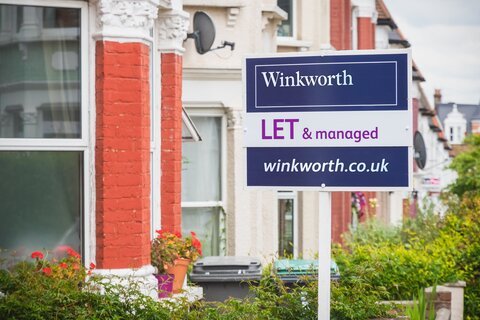
Nationwide lowers permission to let mortgage rate
Nationwide Building Society recently lowered the permission to let rate for its existing customers from 1% over its fixed or tracker rates to 0.5% over the rates. The move should make it cheaper for borrowers to let out their homes.
If you have a residential mortgage and want to let your home out, you will probably need permission from your bank or building society.
While many homebuyers purchase their properties to live in them for the long term, sometimes they need to move out. This may be because their financial circumstances have changed; they want to move in with a partner or relocate for work.
Whatever the reason for the change, mortgage lenders expect borrowers to ask for consent before renting out their property. If you think you may need to move out, even temporarily, the trick is to get a suitable mortgage with a lender with more generous letting terms.
What would your lender do if you applied for permission to let?
- Nationwide Building Society asks customers to complete the permission to let form and raises the mortgage rate by 0.5%. The additional 0.5% added to your rate will end once your fixed rate product ends and you revert to the Standard Mortgage Rate or Base Mortgage Rate. Please remember that once your property is let, you cannot switch your mortgage deal, take additional borrowing, complete a term change, add or remove a borrower. Click here to read the lender's policy.
- Halifax says customers will need to fill in a consent to lease form, and once permission is granted, the rate is unlikely to go up. This policy is a real improvement on the old rates the bank previously charged, but problems arise if you let the property without permission. Halifax may increase your mortgage and potentially backdate the extra interest to the point when you let the property. Click here to read the lender's policy.
- Accord Mortgages/Yorkshire Building Society increases the rate on a borrower's mortgage by 1% when the permission is agreed in advance but charges 1.15% when it finds customers with an unauthorised let. There is also a £60 application fee. Click here to read the lender's policy.
- Virgin Money expects permission to be granted before the property is let and certain conditions exist. There is a maximum of 80% loan-to-value, and the mortgage must not have been completed in the last 12 months. A rental calculation will be applied to ensure the rental income will cover the monthly repayments. Virgin Money requires confirmation of rental income from a reputable letting agent or a copy of the tenancy agreement. There is a fee, currently £125, for each consent to let that is granted. Click here to read the lender's policy.
- Santander says you will need the bank’s written permission if you want to let your property. If you don’t get permission or meet its listed conditions, this is called ‘in default’. The bank says a condition of your mortgage was that your property was used as your home, which means our residential interest rates and terms apply to your mortgage. If you ask for our permission to let your property and the bank gives you this, it will normally let you keep the existing residential interest rate on your mortgage until that deal ends. Whilst the property is let, if you want to take a new deal when your existing deal ends, you should be offered Buy to Let mortgage deals. Click here to read the lender's policy.
- HSBC - If you've got an HSBC mortgage you can apply for consent to let on a temporary basis for up to 27 months. This is provided you have held your mortgage with HSBC for at least 6 months. If you'd like to rent out your home more permanently, you'll need to apply for a buy-to-let mortgage instead. No other changes to your mortgage can be made while renting out your home. You can apply for consent to let online or over the phone. Click here to read the lender's policy.
- Barclays. If you need to relocate for work, or to take care of a loved one, temporarily renting your home out can help you keep up your mortgage payments. To do this, you’ll need to apply for permission to let. If you’re planning to permanently rent out your home, you’ll need to apply for a buy-to-let mortgage. This could be right for you if: You won’t live at the property while it’s rented out, you’re planning to rent out the property for the foreseeable future, with no intention to move back in. Or if you are planning to become a landlord. Click here to read the lender's policy.
- NatWest's consent to let has an initial fee of £120. You will need to have held your mortgage for a minimum of 6 months and have no arrears on your mortgage. There is an additional annual fee of £120 to maintain consent to let on your mortgage. The property must be rented using an acceptable tenancy agreement, such as an assured shorthold tenancy. Only one tenancy agreement can be used for one property. You must also notify your building and contents insurer as this may alter the cover. At the moment the lender does not increase the rate. Click here to read the lender's policy.
Do you need permission to let?
Yes, normally you do.
As a rule, the lenders do not like a property to be let out within six months of completion, and there needs to be a reasonable reason for letting it.
Aaron Strutt, product director at Trinity Financial, says: “If you are buying a property and you do not think you will be in it over the longer term, you need to think twice about locking into a rate with early repayment charges.
“You may be better off taking advantage of some of the early repayment charge-free products on the market or opting for a buy-to-let mortgage. It may also be worthwhile choosing a lender with one of the better permission to let policy that does not increase your mortgage rate if you let it out.”
Call Trinity Financial on 020 7016 0790 to secure a buy-to-let mortgage or book a consultation
The information contained within was correct at the time of publication but is subject to change.
Your mortgage is secured on your property. Your property may be repossessed if you do not keep up repayments on your mortgage










